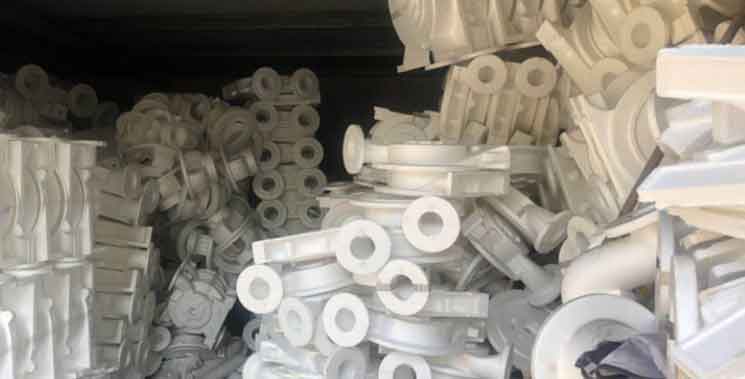Lost foam casting is a manufacturing process that combines efficiency and precision, offering numerous benefits to industries across various sectors. Here’s how lost foam casting unleashes the potential for efficiency and precision:

- Simplified Process: Lost foam casting eliminates the need for complex mold-making and core-making processes associated with other casting methods. Instead, a foam pattern is created, coated with refractory material, and placed in a flask. The molten metal is then poured directly onto the foam pattern, which vaporizes and creates a cavity in the shape of the desired component. This simplified process reduces the number of steps, streamlines production, and improves overall efficiency.
- Near-Net Shape Casting: Lost foam casting produces near-net shape components, minimizing the amount of material that needs to be machined or removed after casting. The foam pattern replicates the final shape of the component with high accuracy, reducing the need for extensive post-casting machining or finishing. This near-net shape capability saves time, reduces material wastage, and improves overall production efficiency.
- Complex Geometries: Lost foam casting allows for the production of components with complex geometries, intricate details, and undercuts. The foam patterns used in lost foam casting can be easily shaped and manipulated, providing design freedom and enabling the creation of intricate and unique shapes that would be challenging to achieve with other casting methods. This capability opens up possibilities for complex and innovative designs in various industries.
- High Precision: Lost foam casting offers excellent dimensional accuracy and repeatability. The foam patterns are typically created using precise CAD/CAM technologies or 3D printing techniques, ensuring accurate replication of the desired design. The absence of parting lines and cores eliminates potential mismatch or misalignment issues, resulting in highly precise and consistent components.
- Efficient Material Utilization: Lost foam casting optimizes material utilization by eliminating the need for cores and reducing material waste. The foam pattern serves as both the pattern and the core, maximizing the use of the casting material and minimizing scrap generation. This efficient material utilization contributes to cost savings and environmental sustainability.
- Reduced Tooling Costs: Lost foam casting offers cost advantages compared to other casting methods. The foam patterns used in the process can be produced using low-cost molds or even 3D printing techniques. This eliminates the need for complex and expensive tooling, reducing upfront costs and making lost foam casting a cost-effective solution, particularly for small to medium-scale production runs or prototypes.
- Design Flexibility and Integration: Lost foam casting allows for the integration of multiple features or components into a single cast, reducing the need for separate parts and assembly operations. This design flexibility simplifies the overall production process, reduces assembly time, and improves component performance and reliability. It also enables the creation of components with optimized internal structures, cooling systems, or functional features.
The combination of efficiency and precision in lost foam casting makes it an attractive choice for manufacturers seeking to optimize their production processes while maintaining high-quality standards. Whether it’s for complex geometries, near-net shape casting, or efficient material utilization, lost foam casting offers a range of advantages that can significantly enhance productivity and competitiveness in various industries.
